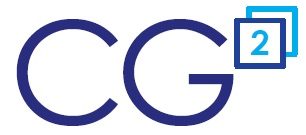CPG companies use a bottom-up approach to planning and forecasting because there are many advantages.
Here are some observations for the CPG industry that create forecasting challenges:
- The timing and frequency of trade promotions dramatically impact how much you sell in any given week or month. Unlike some industries which have a steady, predictable business, CPG is highly driven by promotional events. Rebates, MCBs, discounts and allowances impact how much you need to manufacture, and they impact your financial statements.
- Promotions are unique to individual customers, in lift, timing, and financial impact. The era of a national trade promotions across all customers is a relic of the last century.
- Your sales team is most knowledgeable about customer promotions because they negotiate these deals with customer.
- Top customers can be a significant share of a company’s business, so promotions at one customer can dramatically change the demand plan and impact the company’s P&Ls.
- You can't always use shipments to track your promotion results. You don't ship to indirect customers because they buy through a distributor. For direct customers, you may have shipped the product weeks or months before the promotion dates.
- Trade promotion timing changes often, and with short-notice. This makes it more difficult do accurate long-range forecasting.
Here are some of the advantages of a bottom-up approach that address many of the CPG industry forecasting challenges:
- The forecast is created by customer and promotion, the level at where promotional timing, frequency and lift is more accurate.
- You can plan promotions for indirect customers, and for promotions where there is a disconnect between sell-in and sell-through.
- The forecast is generated by the sales team, which has more accurate knowledge about the timing, frequency and lift of promotions.
- This bottom-up forecast can be used to help validate a top-down forecast generated mathematically by a demand planning solution. Demand planning modules can utilize some of the promotional information from the bottom-up forecast as independent variables to create a more accurate forecast model from historical data. The demand planning solution forecast will also be more accurate because the promotional coefficients will be applied based on more accrual deal timing of future deals.
- You can your sales team improve promotional forecasting accuracy by using syndicated data like IRI or AC Nielsen, SPINS, POS and/or other third-party data. To see an improvement in forecasting accuracy, you don’t have to buy data for all your customers. Consider focusing on your top volume customers.
To see the components of bottom-up planning, see this month’s blog at www.i-TPM.com/blog/
Alex Ring
Co-founder & President
CG Squared, Inc.
